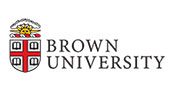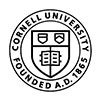Healthcare News
Ethical and Regulatory Considerations Related to Regenerative Medicine
The application of stem cell therapies in orthopedics holds promise for the treatment of degenerative musculoskeletal conditions. Advances in cell sourcing, differentiation protocols, and delivery methods have brought the field closer to the point-of-care application of these therapies. Personalized strategies that can target individual cell deficiencies represent the future of orthopedic regenerative medicine, offering the potential for reversing established disease and increased functional outcomes.
What's Causing Your Inner Elbow Pain—and How To Treat It
Inner elbow pain pain often stems from overuse and repetitive stress. It can sometimes develop in response to injury or inflammation, such as medial epicondylitis (golfer's elbow) or arthritis.
What to know about deltoid pain
The deltoid is a large muscle responsible for lifting the arm and giving the shoulder its range of motion. Pain in this area may be due to issues like overuse or injury.
What to know about knee stiffness
A stiff knee is a common complaint, especially among older adults and those who are very physically active. Knee stiffness can occur due to low flexibility or muscular imbalances in the legs, injury, or arthritis. The most suitable treatment for knee stiffness depends on the underlying cause.
Tips for healing a sprained ankle fast
Sprained ankles can be very painful, and severe sprains can require months of recovery. However, a person can take several steps at home to help speed their healing and reduce the risk of re-injury.
Bioactive multifunctional hydrogel to ameliorate adverse joint microenvironment and enhance cartilage regeneration
Our prepared hydrogel showed therapeutic capabilities in ameliorating adverse joint microenvironment and enhancing cartilage regeneration.
How to Get Rid of Sore Muscles: 10 Relief Tips
It's common for your muscles to feel sore after a workout, particularly if it's a new exercise for you or a more intense session. Experts call this delayed-onset muscle soreness (DOMS), and it happens after physical activity that puts an unaccustomed load on your muscles. Whether muscle soreness is mild and barely noticeable or extremely painful, there are several ways in which to relieve discomfort and possibly recover faster.
Ankles may hold the key to new osteoarthritis therapy
The ankle’s ability to regenerate cartilage uses the same mechanisms that enable some animals to grow new limbs, and it could be harnessed to repair cartilage in knees and hips hobbled by osteoarthritis
XSTEM’s Knee Osteoarthritis Stem Cell Trial: Mid-Study Update, Safety and Positive Efficacy
Xintela has released interim data from its ongoing clinical study evaluating its stem cell product, XSTEM, in patients with knee osteoarthritis. XSTEM is an allogeneic adipose stem cell therapy, consisting of integrin α10β1-selected mesenchymal stem cells. At 18 months post-treatment, the company reports demonstrated safety and positive efficacy, including statistically significant and clinically meaningful improvements in knee pain and knee function.
8 Types of Shoulder Surgeries
Common types of shoulder surgeries include rotator cuff repair, total shoulder replacement, and arthroscopy for conditions like frozen shoulder or impingement syndrome. In general, these and other shoulder procedures help treat shoulder injuries by repairing or replacing cartilage, tendons and ligaments, muscles, and joints.


















